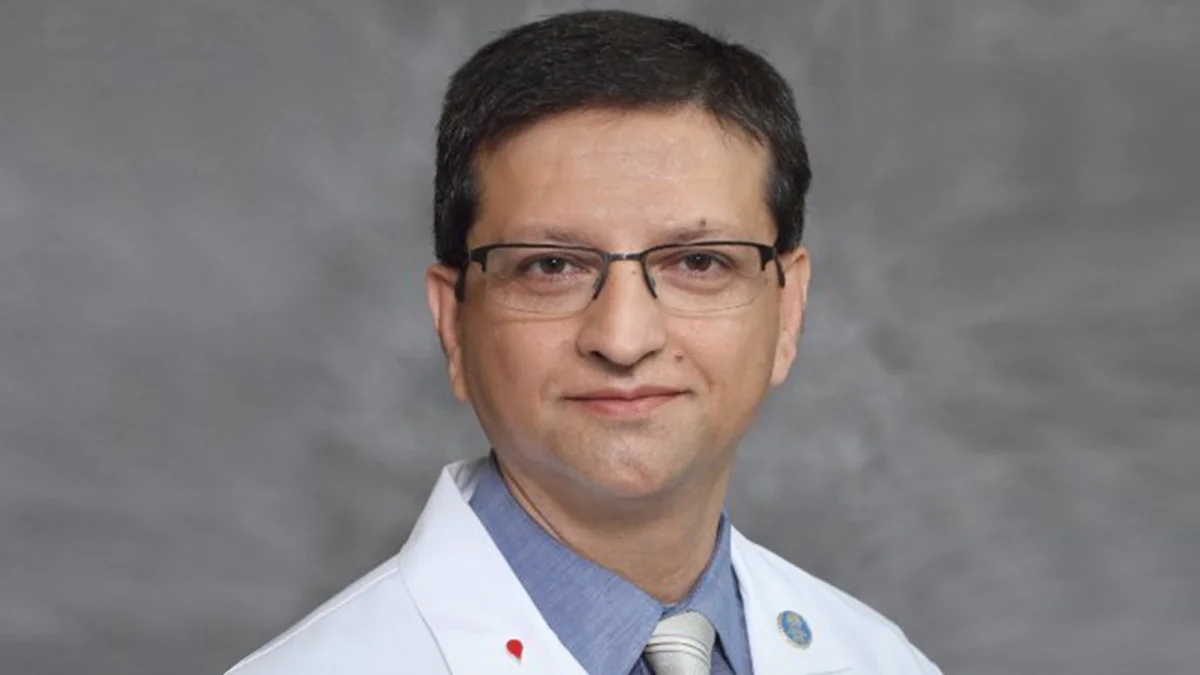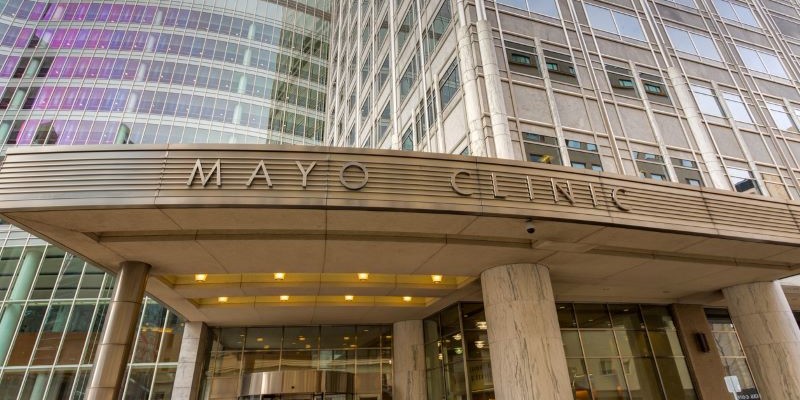
The FDA approved the first chimeric antigen receptor (CAR) T-cell therapy in August 2017, with 5 additional therapies approved in the years since.1 The approvals of these CAR T-cell therapies have changed the treatment landscape for several hematologic malignancies, including diffuse large B-cell lymphoma, acute lymphoblastic leukemia, and multiple myeloma.
However, this game-changing treatment is not without adverse effects, according to Kai Rejeski, MD, of the Memorial Sloan Kettering Cancer Center.
“This is a therapy that is a living drug,” Dr. Rejeski said. “There are interactions between the host and the genetically modified T cells that persist for months and years after the infusion.”
Although each of the approved therapies—axicabtagene ciloleucel, brexucabtagene autoleucel, lisocabtagene maraleucel, idecabtagene vicleucel, ciltacabtagene autoleucel, obecabtagene autoleucel—has a slightly unique safety profile, many of the short-term and long-term effects of CAR T-cell therapy overlap.
Blood Cancers Today recently spoke with several physicians familiar with CAR T-cell therapy–related toxicities about identifying and managing these risks.
CRS, ICANS, Cytopenias
When CAR T-cell therapies were first studied and approved, the most significant and concerning toxicities were cytokine release syndrome (CRS) and immune effector cell–associated neurotoxicity syndromes (ICANS).
CRS and ICANS are estimated to occur in at least half of patients with hematologic malignancies who undergo CAR T-cell therapy,2,3 although not all cases are severe, and rates can vary with specific therapies.
According to Tania Jain, MBBS, director of the Immune Effector Cell Therapy Program at Johns Hopkins University, rates of CRS and ICANS have not necessarily changed in the years since these therapies were first approved, but clinicians’ comfort level with managing these toxicities has.
“When we were initially studying CAR T, it was unclear whether or when we could use [mitigation strategies like] steroids or tocilizumab, and if they would affect the efficacy of the CAR or not,” Dr. T. Jain said. “We have since learned more and know that we don’t have to wait for these to progress to grade 3 or beyond before treating.”
Dr. Rejeski agreed, “We still observe these side effects, but the rate of high-grade CRS has diminished over time. We proactively, or in some cases prophylactically, treat for these.”
Although there has been some connection between CRS and the efficacy of CAR T-cell therapy, one recent study found that development of CRS does not affect survival or response in lymphoma-directed therapies.4
“When we started out 7 or 8 years ago, we worried that CRS was necessary for the efficacy of CAR T cells, but the pendulum seems to have swung in the other direction,” said Michael Jain, MD, PhD, ICE-T medical director in the Moffitt Cancer Center Department of Blood and Marrow Transplant and Cellular Immunotherapy. “In tumor models and in mice, there are studies that indicate we may be able to uncouple CRS from efficacy of CAR T cells and envision a world without CRS in the future.”
As clinicians have gained a better understanding of CRS and ICANS, they have also identified consequential toxicities related to cytopenias and other hematologic complications.
“Initially, these were attributed to the lymphodepleting chemotherapy given before CAR-T, but we are observing that cytopenias can persist longer than would be expected with lymphodepleting chemotherapy,” Dr. Rejeski said.
These prolonged cytopenias are a concern, he said. With increased insight, clinicians have learned that patients typically have a rapid recovery of neutrophils after lymphodepletion, an intermittent or biphasic pattern of recovery, or an aplastic pattern, Dr. Rejeski said.
“It is patients who have counts drop after lymphodepletion and never recover that are at particularly high risk for infectious complications,” he said.
Infection Risk
Many patients who undergo CAR T-cell therapy are at risk for early and late infectious complications. The magnitude of the risk became more clear last year after Dr. Rejeski and colleagues published a meta-analysis of nonrelapse mortality after CAR T-cell therapy.5
The analysis looked at 7,604 patients from 18 clinical trials and 28 real-world studies of CAR T-cell therapy for lymphoma and multiple myeloma. Of the nonrelapse deaths reported, more than half (50.9%) were attributed to infections. In comparison, CRS, ICANS, and hemophagocytic lymphohistiocytosis were responsible for 11.5% of nonrelapse mortality.
Clinicians have long been aware of issues related to immune reconstitution after CAR T-cell therapy, according to Dr. M. Jain.
“When you have active CAR T cells, they eat up the B cells, and B cells make antibodies,” said Dr. M. Jain. “In about half of patients, B cells recover, but in other patients, the CAR T cells may be active for as much as a decade, and they can have lifelong impairment of antibodies.”
Other patients may have lifelong T-cell deficits, Dr. M. Jain said, adding that it is hard to know whether these immune deficits are caused by the CAR T cells, the cumulative effect of other therapies in addition to CAR-T, or a dysregulated immune system that allowed the myeloma or lymphomas to develop in the first place.
“I think we all knew that there was risk for infections, but we did not have these numbers in our head that infections are by far the prominent cause of death,” said Joshua Brody, MD, director of the Lymphoma Immunotherapy Program at The Tisch Cancer Institute at Mount Sinai, New York.
The best strategy for improving infection-related outcomes is preventing infections, according to Dr. T. Jain. “Over the years, there has been more and more data to support prophylactic strategies, and we have to continue to build them up and get them widely adopted.”
In the immediate term, the first weeks or month, infectious concerns are mainly bacterial or fungal, Dr. T. Jain said. For patients with an absolute neutrophil count (ANC) under 500 cells/mm3, most institutions start antibacterial prophylaxis and antifungal prophylaxis, she said. If the ANC remains under 500 for a couple of weeks, or after 3 or more days of steroids, then more active antifungal agents should be used.
In the long term, viral infections are also a risk. Revaccination of patients, similar to what is done after autologous transplant, is also important, according to Dr. Brody.
“I don’t think there is absolute clarity on which vaccines and when,” Dr. Brody said. “That information is somewhat incomplete because we have a new RSV [respiratory syncytial virus] vaccine, a new shingles vaccine, but at a minimum, there should be an annual flu shot and an annual COVID shot.”
Other mitigation strategies include the use of intravenous immunoglobulin in patients with hypogammaglobulinemia, which is associated with increased risk for infections.
“There is emerging evidence for the use of immunoglobulin replacement therapy for secondary immune deficiency induced by CAR T-cell therapy,” Dr. Rejeski said. “But we are abstracting that from other diseases. We are awaiting prospective evidence [in CAR T-cell patients], but I would say that right now it is almost standard of care to have a lower threshold to apply immunoglobulin in these patients that have high risk for infections.”
There is also some evidence for use of granulocyte colony-stimulating factor to mitigate neutropenia in patients who have undergone CAR T-cell therapy, but there is some concern about it increasing CRS risk, and there is no consensus on strategy.6
In general, clinicians should have a low threshold for concern and should take infectious symptoms seriously, Dr. Brody said.
“Someone who is 6 weeks post CAR-T and gets a low fever should not be treated like a regular healthy patient,” Dr. Brody said. “They should go to the emergency room.”
Certain patients are likely to be at higher risk for infectious complications. Risk can be calculated using the CAR-HEMATOTOX score, a risk stratification score that measures markers associated with hematopoietic reserve and baseline inflammation.7
Research has shown that patients with higher baseline CAR-HEMATOX scores are at increased risk for prolonged neutropenia and severe infections.8
“This allows you to pick the best candidates for CAR T-cell therapy,” Dr. Brody said, “and to know which patients are at higher risk and are in need of close monitoring and infection prevention strategies.”
MNTs and SPMs
Another toxicity that has come to light as CRS and ICANS have become better managed is what has been called movement and neurocognitive toxicities (MNTs), according to Dr. T. Jain. This is considered to be an on-target, off-tumor effect of B-cell maturation agent (BCMA)–targeting CAR T-cell therapy.
“These are nervous system toxicities that occur with cilta-cel [ciltacabtagene autoleucel] and can occur anywhere from a month to several months after infusion,” Dr. T. Jain said.
MNTs are characterized by a variety of movement, cognitive, and personality changes including micrographia, tremors, memory loss, disturbance in attention, and reduced facial expression.9
Among the first to describe this toxicity were Parekh and colleagues who published a case report detailing a patient who had enrolled in the CARTITUDE-1 trial and was treated with ciltacabtagene autoleucel, a BCMA-targeted CAR T-cell therapy.10 The patient developed “a progressive movement disorder with features of parkinsonism.”
It was estimated that MNTs occurred in about 6% of patients treated in CARTITUDE-1,11 and risk factors are thought to include high tumor burden, any-grade ICANS, high CAR T-cell expansion, and severe CRS.12 A retrospective study of patients treated with BCMA-targeting CAR T cells at Massachusetts General found that about 8% of patients had new severe neurologic symptoms, and ICANS was often accompanied “by tremors and myoclonus.” Two of the identified patients went on to develop parkinsonism.13 Treatment approaches are still being determined but may result in reversal of the disorder.14
“A severe case of this is quite rare, and it is specific only to BCMA CAR T-cell therapy,” Dr. Brody said. “Although it is not very common, it is absolutely important for discussion in the risks and benefits for BCMA-targeting therapy.”
In addition, patients undergoing BCMA-targeting CAR T-cell therapy should be closely monitored for these unusual toxicities.15
Now that some patients who have undergone CAR T-cell therapy are multiple years out from the time of their infusion, entering a “survivorship” stage, more is being understood about late toxicities associated with the therapy.
In early 2024, the FDA mandated a boxed warning for all of its approved CAR T-cell therapies to highlight “the serious risk of T-cell malignancies.”16
However, studies looking at risk for T-cell lymphoma and secondary primary malignancy (SPM) suggested low risk after CAR T-cell therapy.17 Dr. Rejeski and colleagues published a meta-analysis of data on more than 5,000 patients from 18 clinical trials and 7 real-world studies of CAR T-cell therapy. The analysis showed that although there was a clinically relevant long-term risk for SPM in patients undergoing CAR T-cell therapy, T-cell malignancies comprised a minority of events (1.5%).18
“T-cell lymphomas caused by CAR T-cell therapy are far and away the least common of secondary malignancies that occur,” said Dr. M. Jain. “It appears to be more common to get a secondary T-cell lymphoma not related to the CAR.”
According to Dr. M. Jain, patients with a B-cell lymphoma have a 10-fold higher risk for T-cell lymphoma, absent any CAR T-cell therapy. These patients are also at risk for secondary myeloid malignancies, such as myelodysplastic syndrome or acute myeloid leukemia, or secondary solid tumors.
“Here though, it is a bit difficult to know if the risks for these cancers are higher than they otherwise would be because of prior chemotherapy exposure or patient age,” Dr. M. Jain said. “We haven’t entirely determined if the occurrence of these secondary cancers is increased by the fact that the patient received CAR T-cell. That is still being worked out.”
Move Into the Community
In the coming years, the availability of CAR T-cell therapy is only expected to grow as it becomes available as an outpatient treatment or as an inpatient treatment at community sites.
The phase 2 OUTREACH study looked at CAR T-cell treatment with lisocabtagene maraleucel in a community setting and showed that patients with relapsed or refractory large B-cell lymphoma seemed to respond well to the therapy. Most centers involved in the study had not previously treated patients with CAR T-cell therapy. There was no grade 3 or higher CRS, and rates of neurotoxicity were similar to those observed in previous trials.19
“This is a necessary development,” Dr. Rejeski said. “If we want CAR T-cell therapy to be broadly applied as we spread it to more indications, we can’t treat all patients in large academic centers.”
A key to broadening availability is educating community physicians about these therapies and their side effects and integrating CAR T-cell therapy availability into an integrated system, he said.
Dr. T. Jain agreed, “It needs to be scaled up and we need to involve community partners.”
Pharmaceutical companies will play a big role in this effort, Dr. T. Jain said. The manufacturers can help to make sure that centers onboarding these products have the right services available.
“They need some sort of consultative services and have to have other specialties involved, such as neurology, ICU, pulmonology, and infectious diseases,” Dr. T. Jain said. “As our experience as a whole grows, there is more knowledge that can be shared. More of these adverse effects can be predicted and prevented, and then less of these can be done in a tertiary setting.”
For example, a retrospective study published last year examined rates of CRS and ICANS onset and duration in 475 patients who underwent CAR T-cell therapy at 9 centers. Data indicated that new-onset CRS and ICANS were rarely seen more than 2 weeks after infusion, despite the FDA Risk Evaluation and Mitigation Strategy calling for monitoring of these toxicities for 4 weeks.20
In fact, Dr. Rejeski said that as experience and knowledge of CAR T-cell therapy continue to grow, hematologists will be left facing more of the adverse effects that they have been most familiar with for years.
“There are some specific side effects unique to CAR-T, but now we are talking about side effects that have been known to hematologists for more than 80 years,” Dr. Rejeski said. “The potential for cytopenias, emergence of infectious complications, and, as with some of the first chemotherapy given, the potential for secondary malignancy. We have almost come full circle.”
References
1. Alliance for Cancer Gene Therapy. Approved cell and gene therapies. Accessed February 11, 2025. https://acgtfoundation.org/for-patients/approved-cell-and-gene-therapies/
2. Chaudhary N, Roy S, Lin C-F, et al. Real-world incidence, characteristics and management of cytokine release syndrome induced by chimeric antigen receptor T-cell therapy across hematologic malignancies. Abstract 5150. Presented at American Society of Hematology Annual Meeting and Exposition. December 9-12, 2023. San Diego, California.
3. Frigault MJ, Amoloja T, Burke LM, et al. Rates of cytokine release syndrome (CRS) and immune effector cell–associated neurotoxicity syndrome (ICANS) from Center for International Blood and Marrow Transplant Research (CIBMTR) data on US subjects (SUBJ) with lymphoma following chimeric antigen receptor T cell therapy (CAR-T). J Clin Oncol. 2023;41(16).
4. Bhaskar ST, Patel VG, Porter DL, et al. Chimeric antigen receptor T-cell therapy yields similar outcomes in patients with and without cytokine release syndrome. Blood Adv. 2023;7(17): 4765-4772.
5. Cordas dos Santos DM, Tix T, Shouval R, et al. A systematic review and meta-analysis of nonrelapse mortality after CAR T cell therapy. Nat Med. 2024;30:2667-2678.
6. Miller KC, Johnson PC, Abramson JS, et al. Effect of granulocyte colony-stimulating factor on toxicities after CAR T cell therapy for lymphoma and myeloma. Blood Cancer J. 2022;12(10):146. doi:10.1038/s41408-022-00741-2.
7. Rejeski K, Perez A, Sesques P, et al. CAR-HEMATOTOX: a model for CAR T-cell–related hematologic toxicity in relapsed/refractory large B-cell lymphoma. Blood. 2021;138(24):2499-2513.
8. Rejeski K, Wang Y, Albanyan O, et al. The CAR-HEMATOTOX score identifies patients at high risk for hematological toxicity, infectious complications, and poor treatment outcomes following brexucabtagene autoleucel for relapsed or refractory MCL. Am J Hematol. 2023;98(11):1699-1710.
9. Martin TG, Madduri D, Pacaud L, Usmani SZ. Cilta-cel, a BCMA-targeting CAR-T therapy for heavily pretreated patients with relapsed/refractory multiple myeloma. Future Oncol. 2023;19(34):2297-2311.
10. Van Oekelen O, Aleman A, Upadhyaya B, et al. Neurocognitive and hypokinetic movement disorder with features of parkinsonism after BCMA-targeting CAR-T cell therapy. Nat Med. 2021;27(12):2099-2103.
11. Martin T, Usmani SZ, Berdeja JG, et al. Ciltacabtagene autoleucel, an anti-B-cell maturation antigen chimeric antigen receptor T-cell therapy, for relapsed/refractory multiple myeloma: CARTITUDE-1 2-year follow-up. J Clin Oncol. 2023;41(6):1265-1274. doi: 10.1200/JCO.22.00842
12. Cohen AD, Parekh S, Santomasso BD, et al. Incidence and management of CAR-T neurotoxicity in patients with multiple myeloma treated with ciltacabtagene autoleucel in CARTITUDE studies. Blood Cancer J. 2022;12(2):32. doi: 10.1038/s41408-022-00629-1
13. Karschnia P, Miller KC, Yee AJ, et al. Neurologic toxicities following adoptive immunotherapy with BCMA-directed CAR T cells. Blood. 2023;142(14):1243-1248.
14. Graham CE, Loo W-H, Wiggin HR, et al. Chemotherapy-induced reversal of ciltacabtagene autoleucel–associated movement and neurocognitive toxicity. Blood. 2023;142(12):1248-1252.
15. Gust J. BCMA-CAR T-cell treatment–associated parkinsonism. Blood. 2023;142(14):1181-1183. doi: 10.1182/blood.2023021860
16. US Food and Drug Administration. FDA requires boxed warning for T cell malignancies following treatment with BCMA-directed or CD19-directed autologous chimeric antigen receptor (CAR) T cell immunotherapies. Posted April 18, 2024. Accessed February 11, 2025. https://www.fda.gov/vaccines-blood-biologics/safety-availability-biologics/fda-requires-boxed-warning-t-cell-malignancies-following-treatment-bcma-directed-or-cd19-directed
17. Ghilardi G, Fraietta JA, Gerson JN, et al. T cell lymphoma and secondary primary malignancy risk after commercial CAR T cell therapy. Nat Med. 2024;30:984-989.
18. Tix T, Alhomoud M, Shouval R, et al. second primary malignancies after car t-cell therapy: a systematic review and meta-analysis of 5,517 lymphoma and myeloma patients. Clin Cancer Res. 2024;30(20):4690-4700.
19. Linhares Y, Freytes CO, Cherry M, et al. OUTREACH: phase 2 study of lisocabtagene maraleucel as outpatient or inpatient treatment at community sites for R/R LBCL. Blood Adv. 2024;8(23):6114-6126
20. Ahmed N, Wesson W, Lutfi F, et al. Optimizing the post-CAR T monitoring period in recipients of axicabtagene ciloleucel, tisagenlecleucel, and lisocabtagene maraleucel. Blood Adv. 2024;8(20): 5346-5354






 © 2025 Mashup Media, LLC, a Formedics Property. All Rights Reserved.
© 2025 Mashup Media, LLC, a Formedics Property. All Rights Reserved.